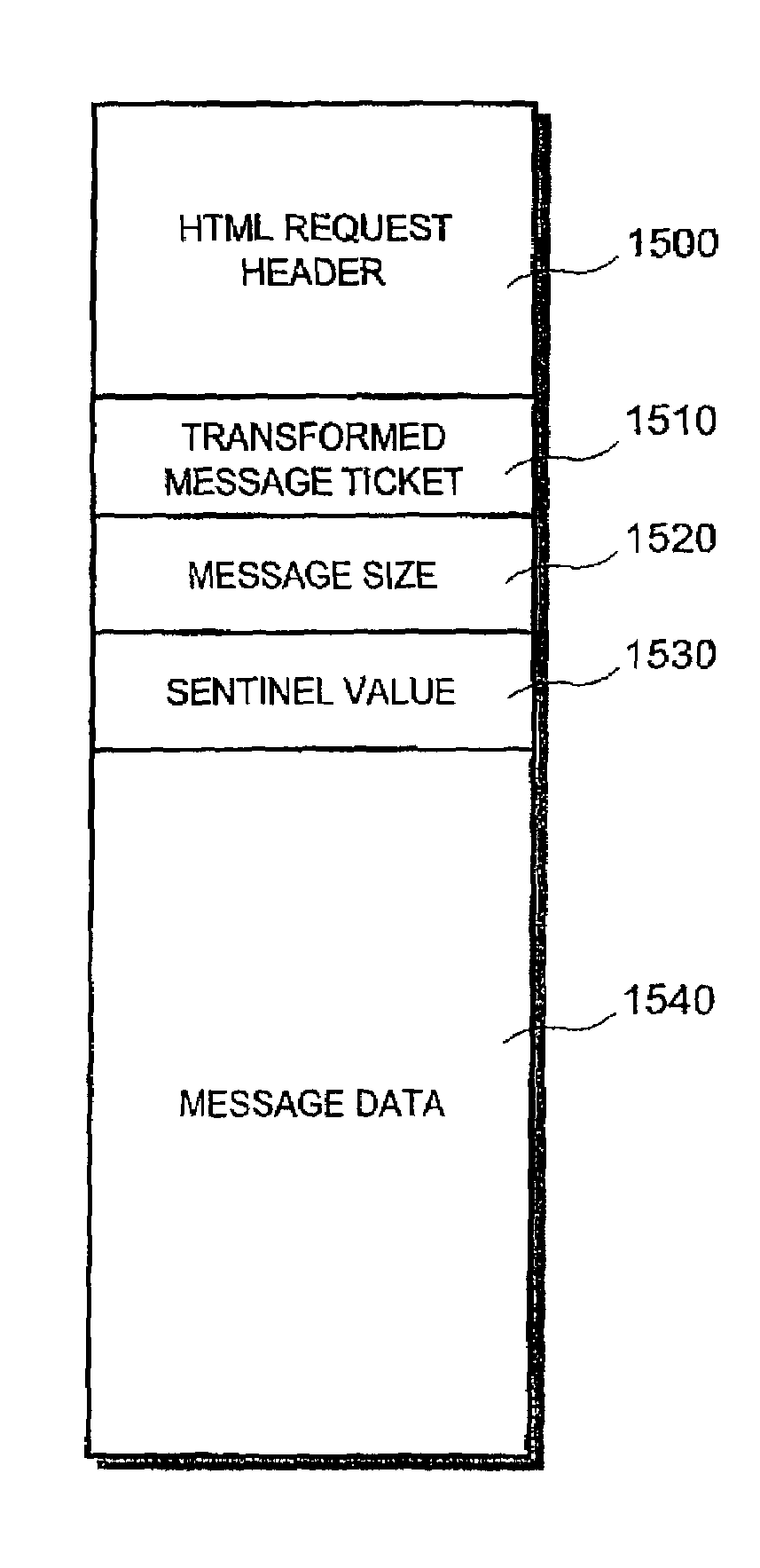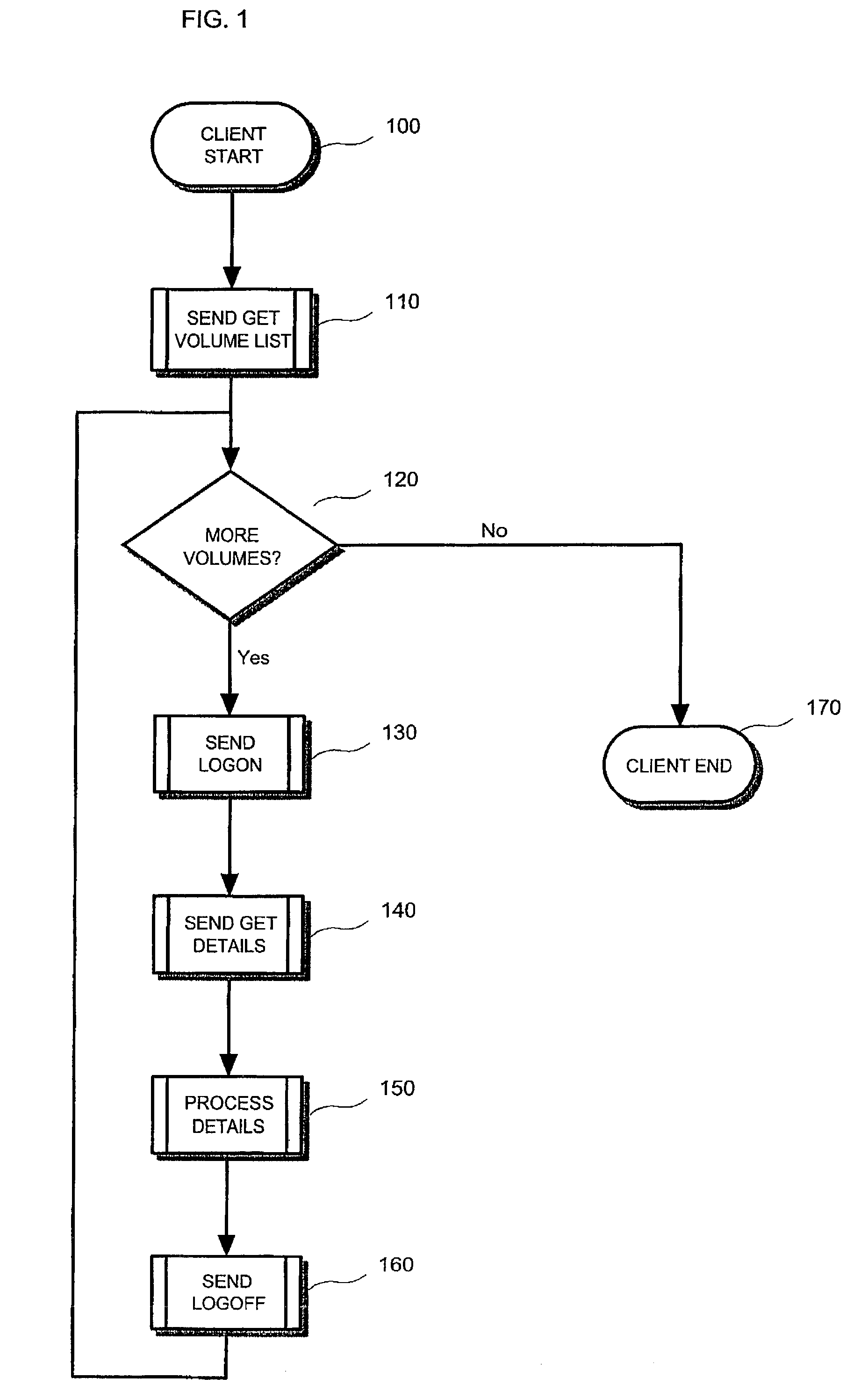Most conventional means of
synchronizing data between computing devices depend upon a constant, stable,
network connection and often cannot reliably operate across a firewall.
Such low network utilization in the context of the need to meet increasing data transfer loads in turn results in building or configuring more network resources (in the form of sockets and ports) than is strictly necessary.
Disadvantageously, conventional
file transfer means: cannot determine the set of files to change, send files uncompressed, and leave residual information respecting the user at the end of a session.
Further, those means of
file transfer that can cross firewalls require modifications to the host or
client computer
system to permit operation, which as a result often suffer a significant reduction in performance.
Relative to the
directory structure in which the subject files are located mirroring storage methods disadvantageously for online, but particularly so for
wireless operations redundantly capture all of the bits on all paths, even where a majority of the files have not been altered since they were first written.
On a network (including
the InterNet) computing device, the “path” is typically longer and more complex, potentially involving: domains, groups, a user, a session, an
IP address, remote networks, routers, bridges, firewalls, servers,
peripheral devices, drives, directories or folders, a file name or ID, file handles, various file information (including properties, access rights, and contents), various formats, and other organizational detail.
Such systems often have significant problems with
data security and integrity, as well as suffering from poor network utilization.
Disadvantageously, none of such proprietary systems are easily operable by an untrained user without changing system settings on the
client machine.
And, none of said systems are sufficiently robust to encourage users to store business-critical information on the
server at the same time as being flexible enough to grant access from unprepared
client machines such as are found in “Internet Cafés”.
Such methods tend to be lengthy and processor intensive or unintelligent and unable to distinguish altered files from unaltered files.
Disadvantageously, some such methods also require modifications to the
operating system of the
client machine and a constant network connection in order to execute.
Disadvantageously, Hotsynch does not contemplate multiple computers accessing the
server simultaneously, nor the use of any network connection that implements a TCP / IP stack.
Even ExtendedSystems product that addresses PDA synchronization beyond the functionality provided in HotSync, disadvantageously provides no means for exploring or interpreting the contents of files.
PC DOCS products allow multiple individuals to manually coordinate changes to a set of shared files using document version numbers over a dedicated network connection without compression or security making it unsuited to use on public networks.
Further, iPod does not use
encryption and compression during data transfer making it unsuited to use on public networks for the transfer of
business data.
Disadvantageously, traditional FTP clients use a complex protocol (communicating via a special port) that commonly cannot
traverse firewalls and that neither compresses nor encrypts data.
Specialized variations of traditional FTP clients do exist that provide
encryption, but they often require changes to the FTP
server system to accommodate them, and may or may not be able to
traverse firewalls.
Although RepliWeb's
file replication is a good (critical content high-availability and
business continuity) solution for remote site data mirroring,
web publishing, content loading, cascaded file distribution, and consolidation, disadvantageously, Repliweb requires that the target device be available through a previously established secure network connection, typically using an expensive VPN, further requiring knowledge of the target device(s), further consuming network services.
Disadvantageously, to work remotely PowerSync requires that some form of secure VPN already be in place, which is not easy for a non-expert user to do on a unprepared client
workstation such as an
end user may access at an Internet Café or an airport terminal.
SureSync from
Software Pursuits can replicate files to one or more servers, or to
laptop and desktop computers, using LAN, WAN, VPN, TCIP / IP, or FTP connections, but lacks any secure client-server
software interprocess communication.
ViceVersa from TGRMN
software is a Windows utility that compares, mirrors, synchronizes and backs up data, however, ViceVersa is a LAN / WAN based product deploying a number of
file comparison methods, and without a system for
secure communication between software processes during synchronization.
The problem with conventional data transfer and synchronization products (whether for files or for bits) is that they are device specific, require significant configuration and typically do not or cannot: compress; automatically identify the set of changed files or bits; provide secure, remote, bidirectional,
file synchronization across
the Internet; while using an unprepared client
workstation without the intervention of a technical operator.
 Login to View More
Login to View More  Login to View More
Login to View More 


